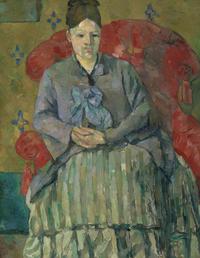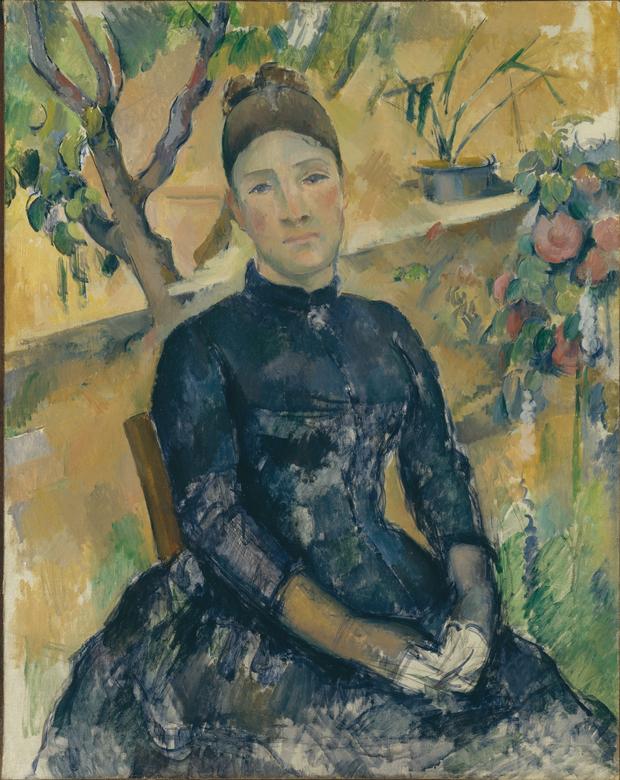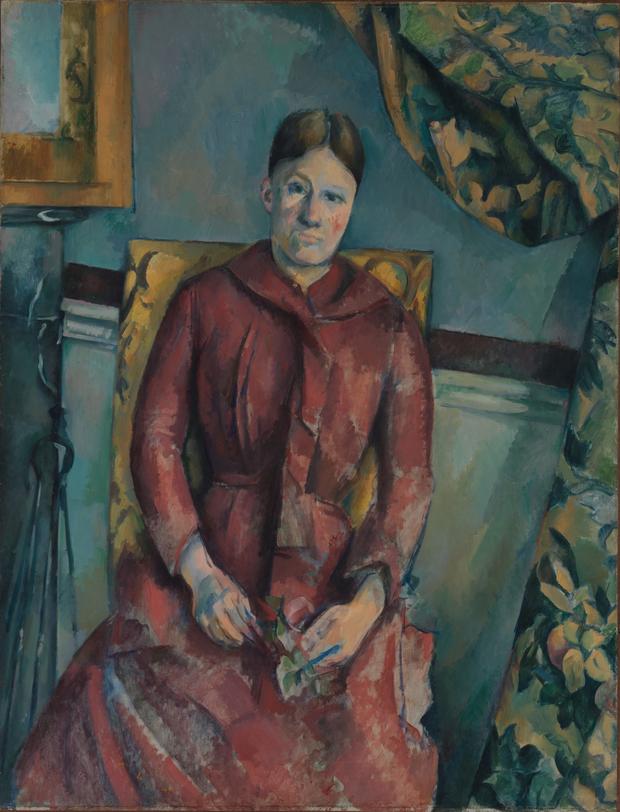 |
Paul Cézanne, Madame Cézanne in a Red Armchair, about 1877
(Museum of Fine Arts, Boston)
|
Hortense Fiquet is a mystery in the art world.
She sat for 29 paintings by her husband Paul Cezanne, more than any other model, and smiles in none of them. She was ignored by the French artist's family, friends, and hidden for 17 years before they got married, even though she was the mother of his only son Paul.
In this interview, art critic Deborah Solomon said Madame Cezanne is the opposite of what we think of as a muse She is always portrayed at home, with her hair parted in the middle and her dress buttoned up. She looks sad, bored. "She was not created for the male gaze, you cannot turn her into a sex symbol," she said. Solomon said she sees madame Cezanne as the the anti-Mona Lisa. "Mona Lisa has always intrigued us because nobody knows why she is smiling. But in the case of Madame Cezanne we don't know why she is frowning."
Cezanne and Fiquet met in Paris in 1869, when she was 19 and he was 30. The painter kept their relationship secret for 17 years, mostly out of fear of his banker father. It's believed he finally married her to make his son Paul a legitimate heir of the family fortune.
Philippe Cezanne, the great grandson of Paul and Hortense Cezanne, was in New York City for the opening of the show and he said Fiquet is now seen differently in the family. “I think she was much more important for Cezanne than usually, you know, art history says,” he said.
Cezanne said she took care of the painter, and accepted everything. “In Paris they changed about 20 times of apartment, or flat, so she never know where she was,” he said.
Solomon said the show is fascinating, because it offers a glimpse on the birth of modern art, through 20 years of paintings by Cezanne. "Over that time you can see how he was experimenting with what he called visual sensations. He wasn't interested in capturing her personality, rather he wanted to reflect how she appears to him as he changes angles and moves around a room," she said.
Solomon said the Madame Cezanne paintings show that Cezanne saw Fiquet more like an object than a muse, the opposite of Picasso's paintings of his last wife Jacqueline Roque. "Cezanne had no interest in glamorizing the individual, he was interested in form, rather than flesh," she said.




No comments:
Post a Comment